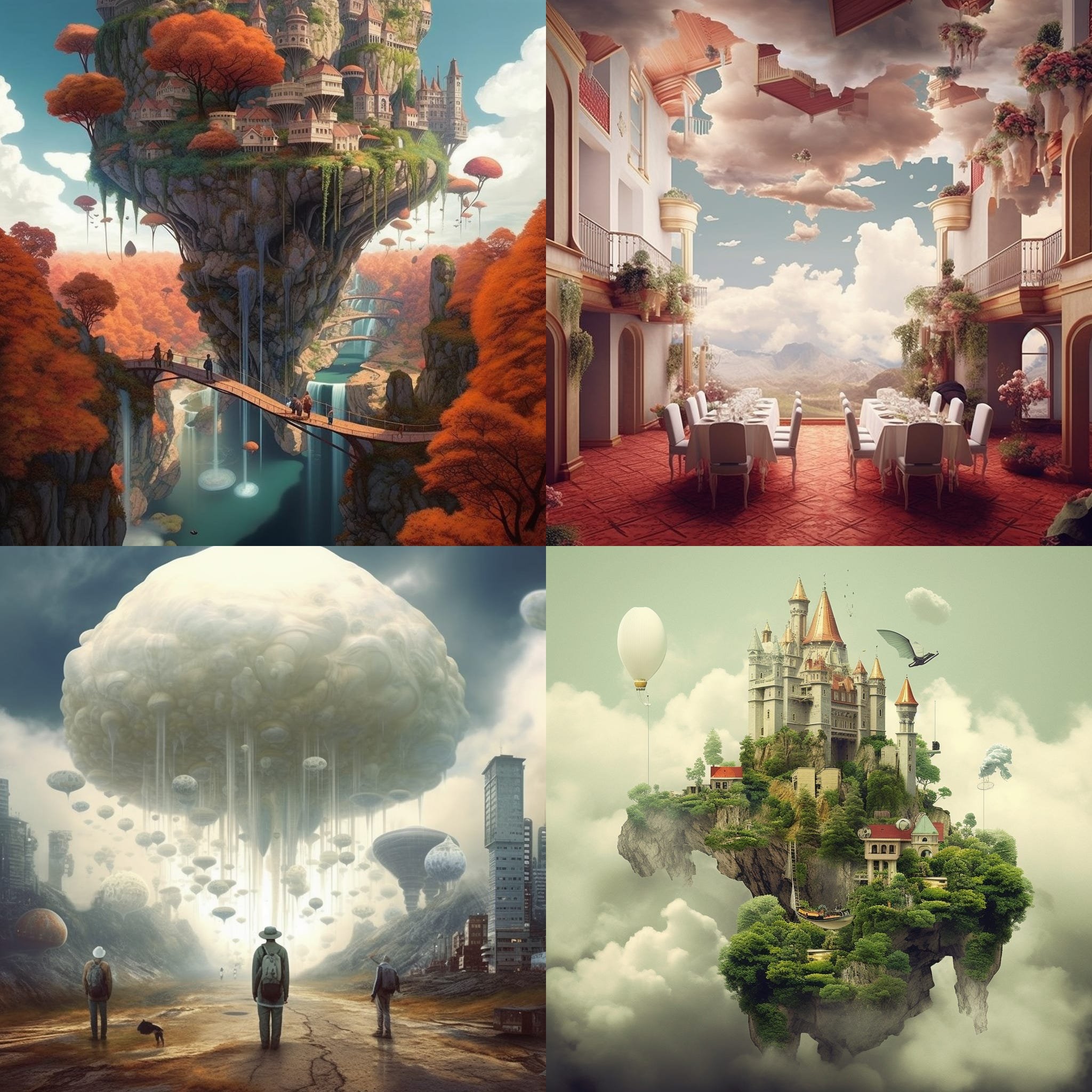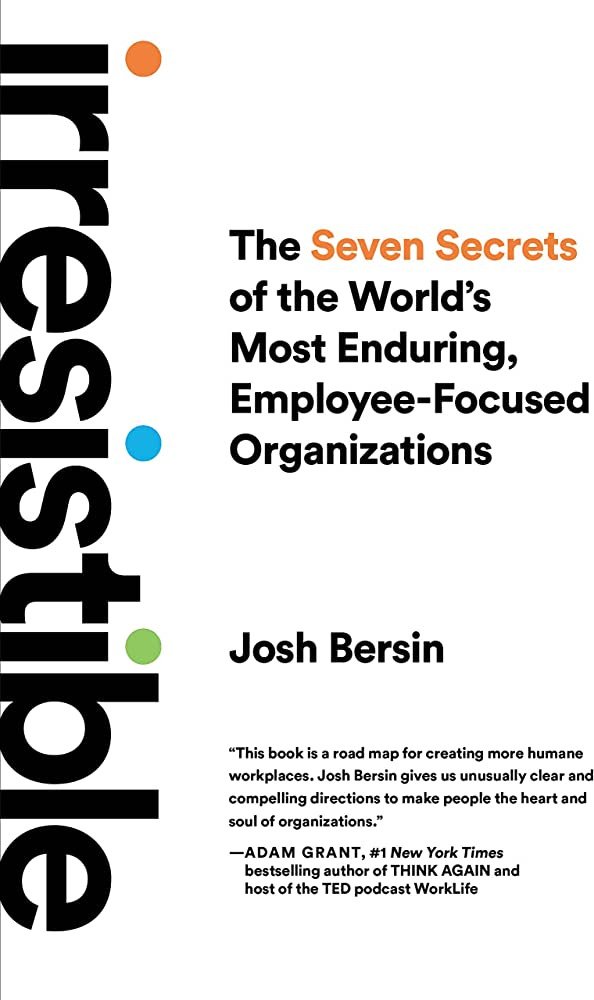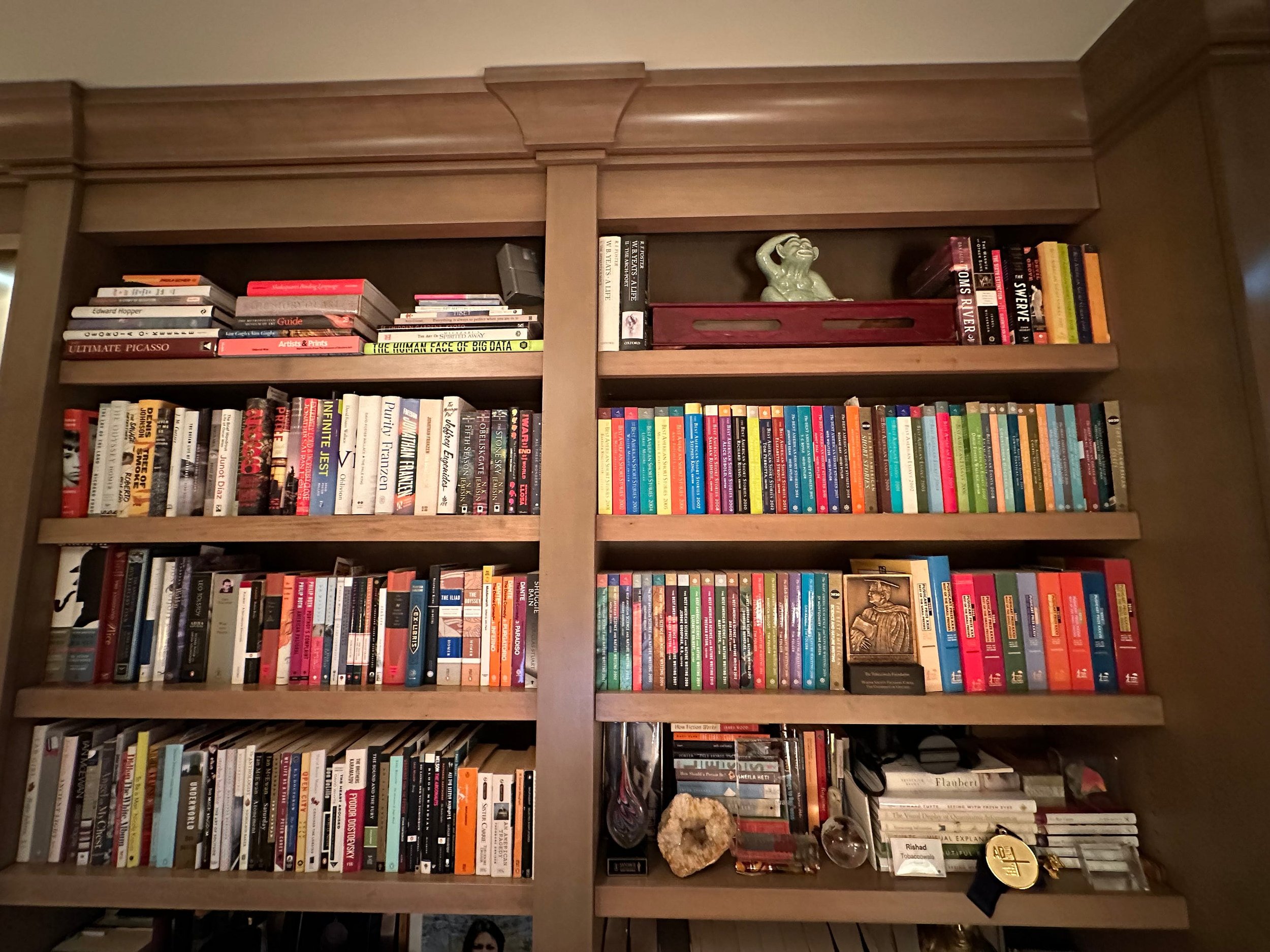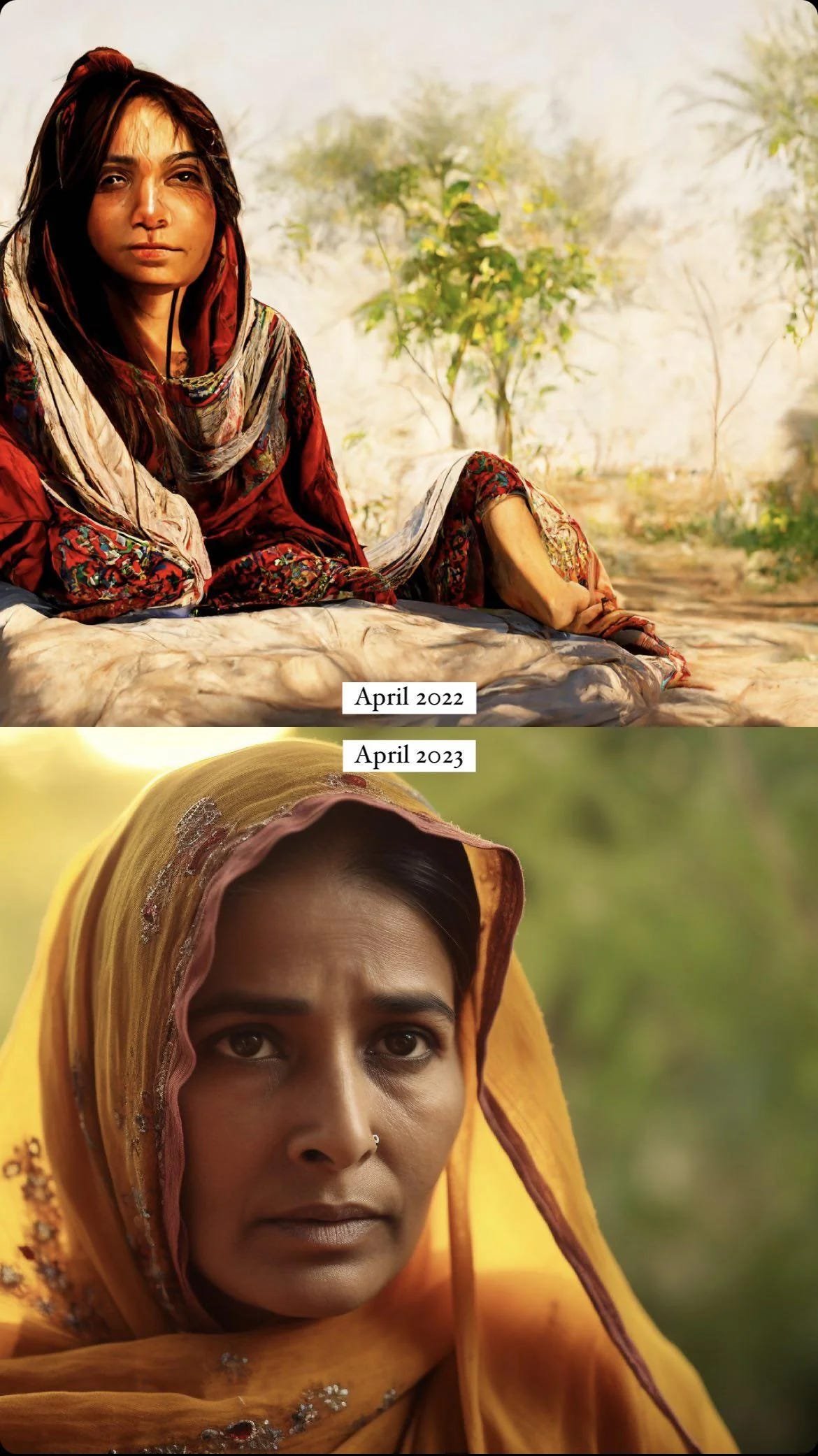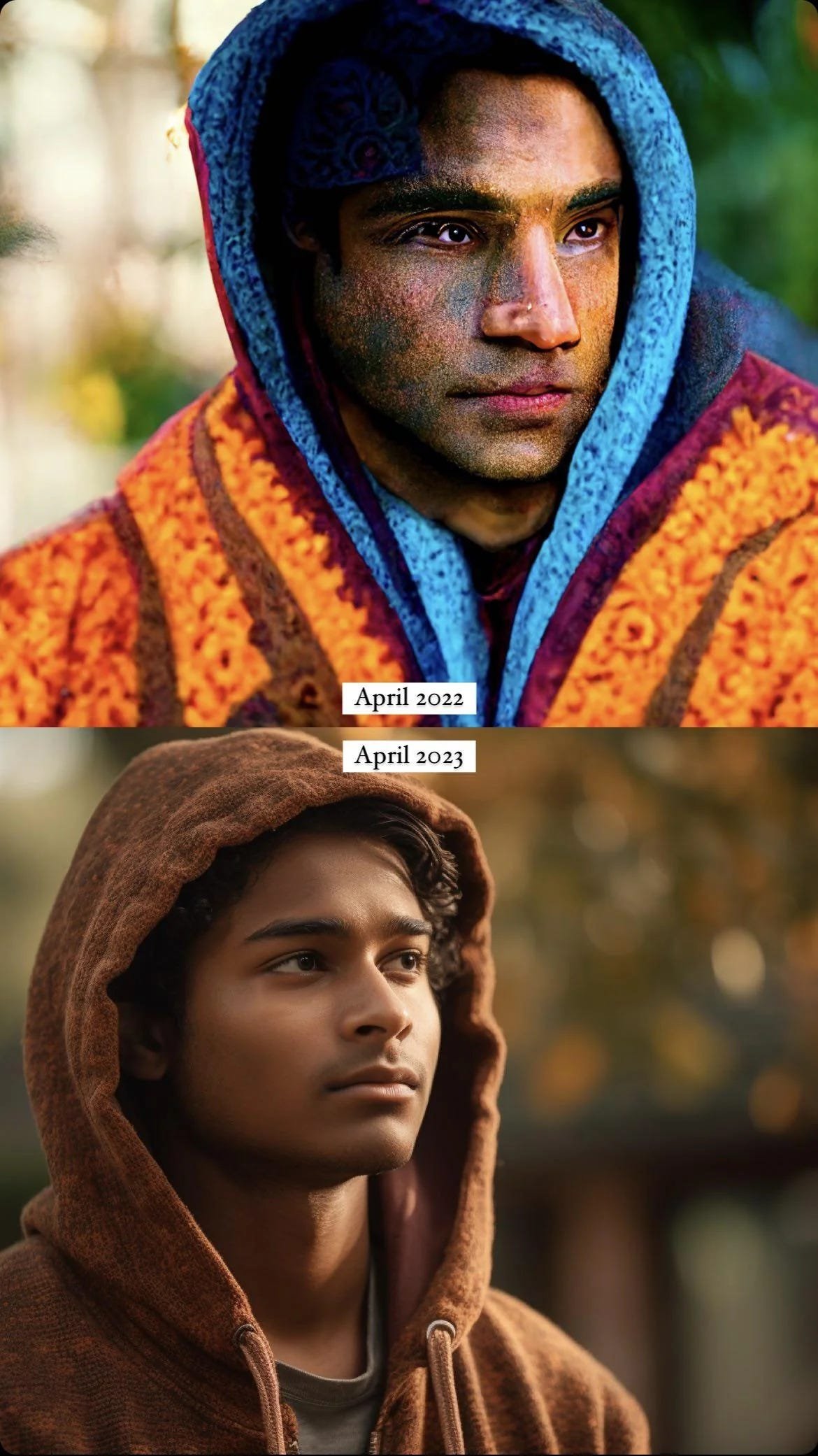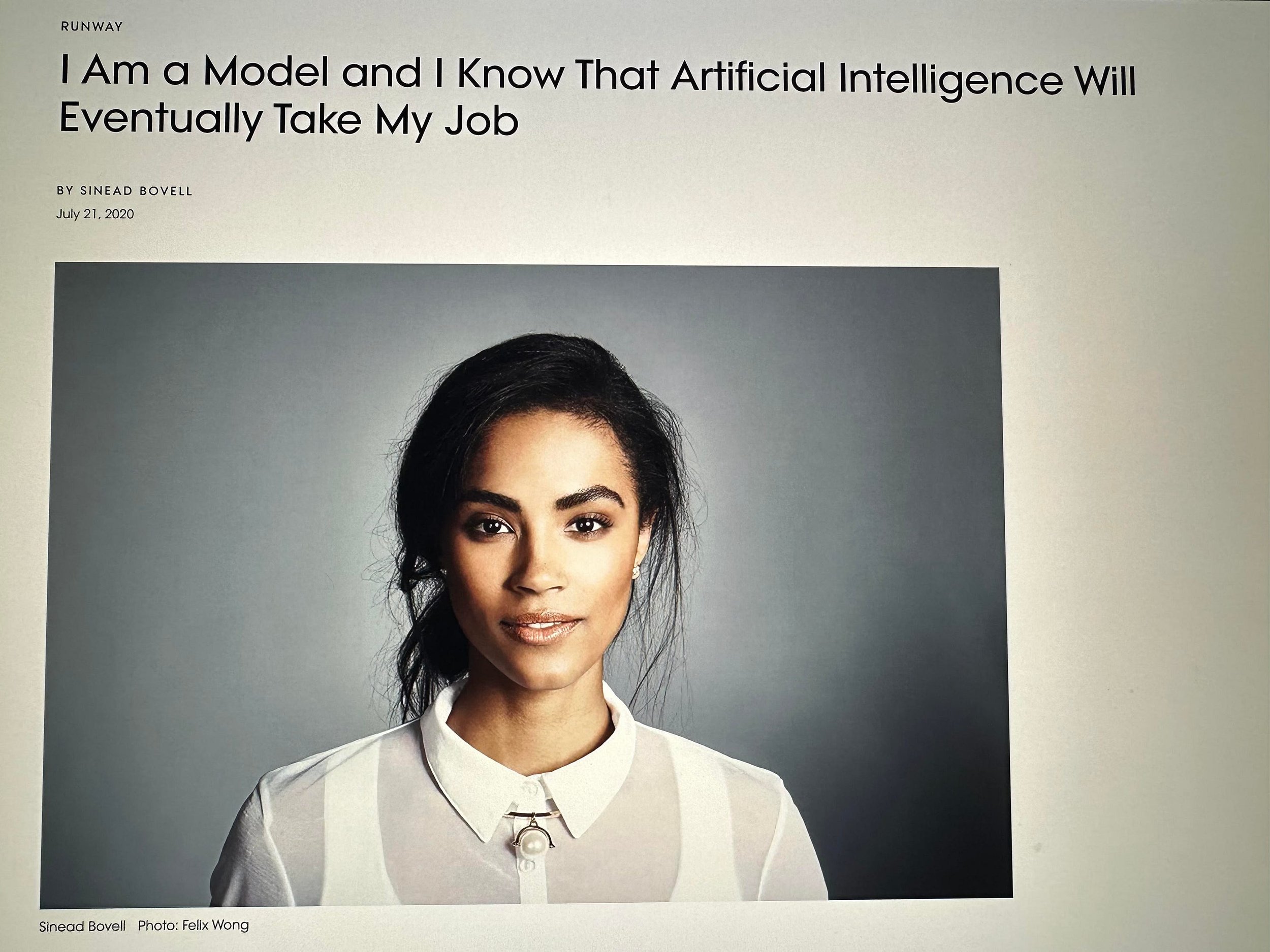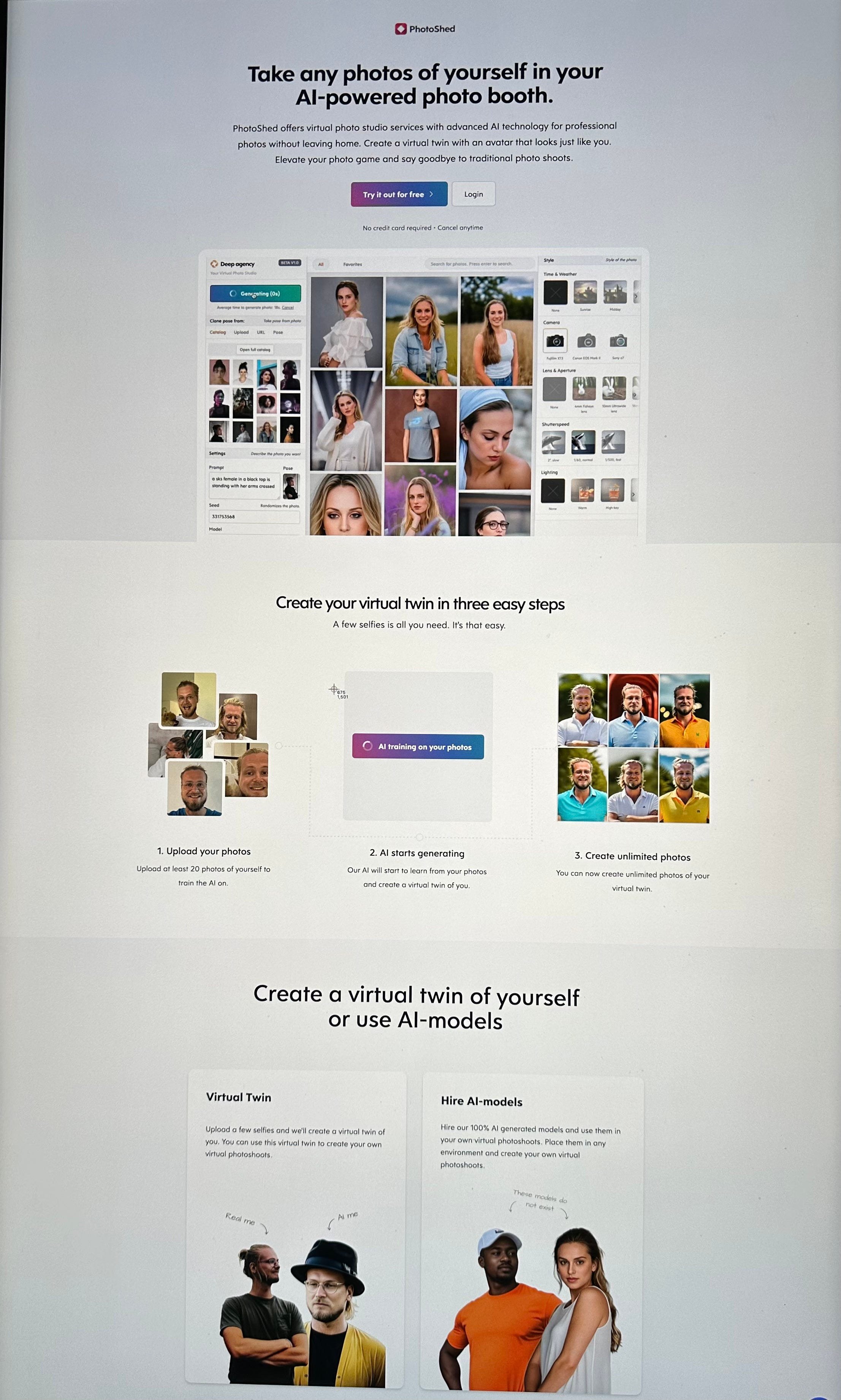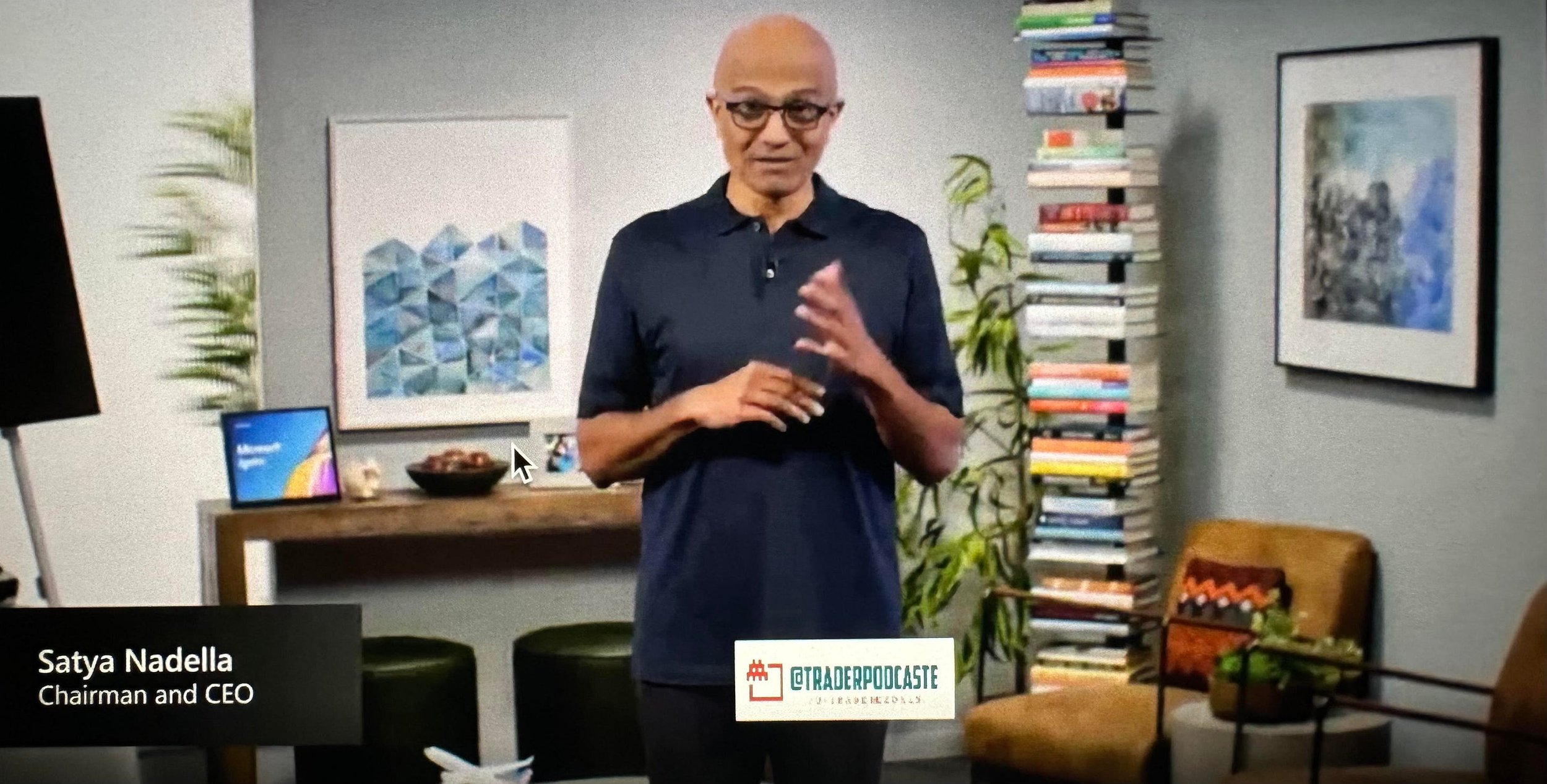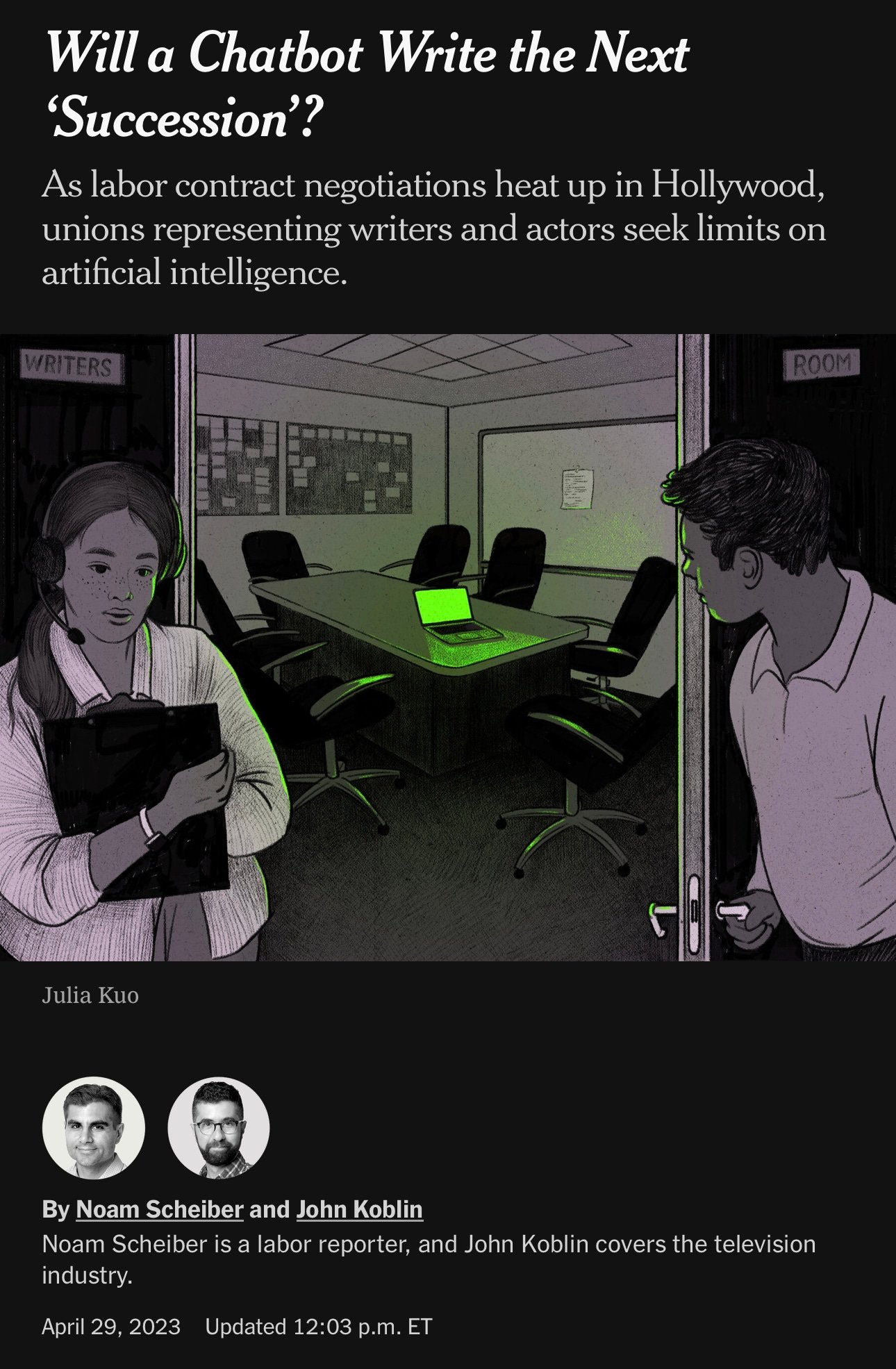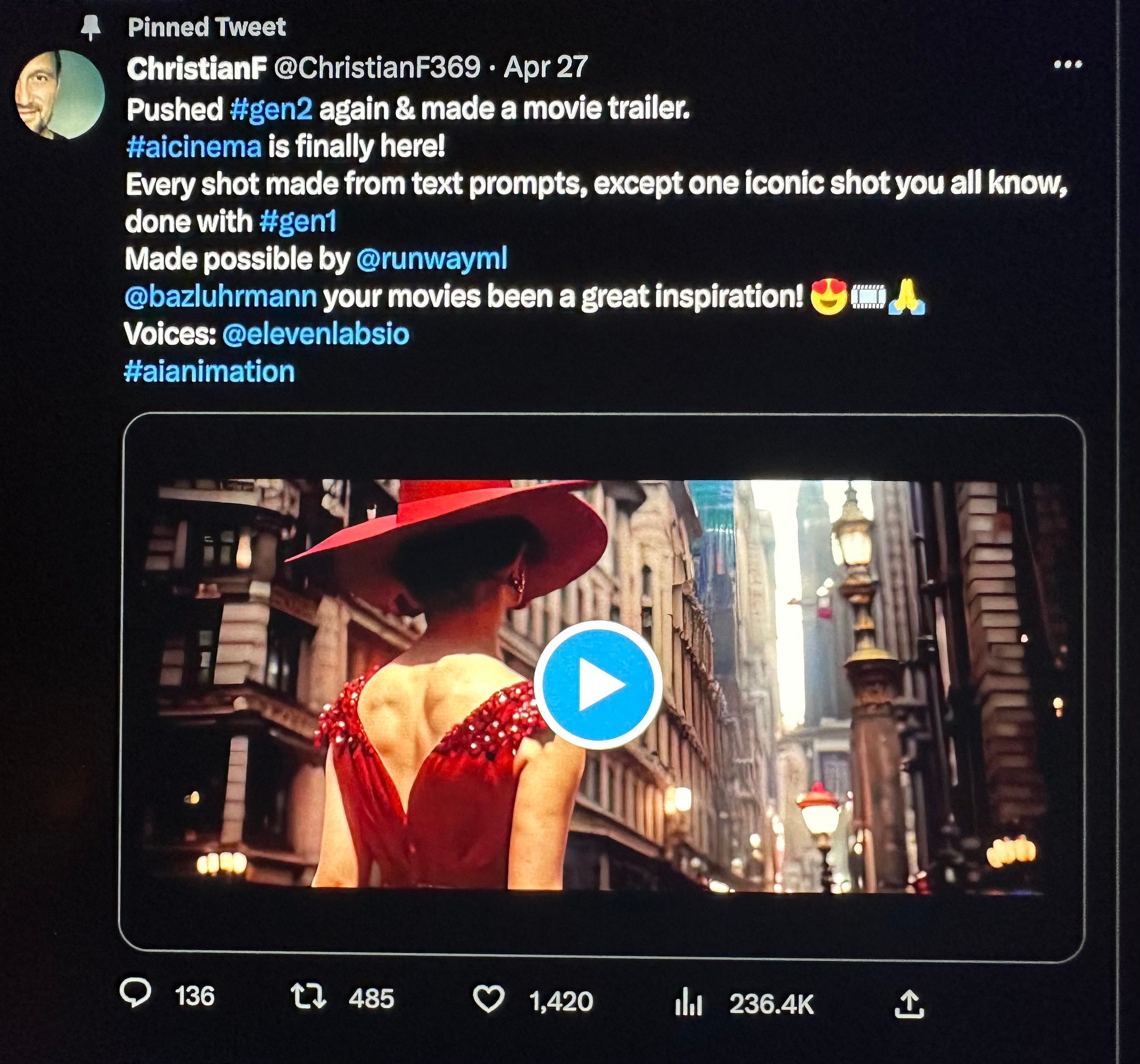Irresistible!
Mid Journey. Prompt…Imagine what irresistible looks like?
Josh Bersin is a legend in the world of Human Resources and Talent.
His four decade long career has spanned all the twists and turns and ups and downs of a career from studying to be an engineer at Cornell and Stanford, earning an MBA from the Haas School of Business at University of California Berkeley to working for large companies such as IBM as well as smaller firms. Josh also has had the experience of being laid off which gave him the opportunity to began Bersin & Associates in 2001 an advisory firm focussed on corporate learning which expanded and grew and was bought by Deloitte in 2012. Josh spent 6 years at Deloitte before he began yet another career in launching the Josh Bersin Academy in 2019 to help develop HR and Learning professionals and in 2020 the Josh Bersin Company which today has 40 analysts and advisors who publish constantly, undertake research and help guide organizations through the transformations at work. And in Fall of 2022 he published Irresistible: The Seven Secrets of the Most Enduring Employee Focussed Organizations.
What Next in the World of Talent?
I was lucky to have Josh as my guest on the latest episode of my What Next? podcast and it is a conversation that everyone who is interested in the future of work whether you are a CEO, a Human Resources professional and most importantly talent navigating your career should listen to!
Some highlights include the following insights and statements and this is just a sampling:
Companies will become their employees rather than the employees becoming the company as the future of talent is crafting jobs around skills of the people versus fitting people into jobs.
Too much emphasis on measurement can lead to reduced productivity as people work to hit goals versus doing the right thing and many times the goals can be counterproductive and can lead to significant damage to a company like Wells Fargo employees opening fake accounts since they were compensated on how many accounts they opened.
Many organizations compensation and reward models as well as management styles are broken being stuck in a world where people moved up a hierarchy, worked full-time in an office, stayed at a company for many years. In today’s environment when skills rather than tenure, unbundled and distributed work and side gigs and side-hustles permeate and careers last much longer than most companies it is management that is failing to transform themselves from bosses to coaches.
Focussing on employee experience and culture is even more important than customer experience and investor relationships. We discuss the ups and downs at two world class firms Starbucks and Microsoft and what we can all learn from them. And how in a world of AI the best companies will be Human Services Companies.
A conversation with Josh Bersin:
Listen wherever you can access podcast from Apple to Spotify. Here is the Spotify Link.
It will change the way you manage and grow yourself, your teams and your business.
The Seven Secrets of the World’s Most Enduring Employee-Focussed Companies.
I have been reading and re-reading Josh’s latest book and have marked it up a lot since it is chock full of examples, methods, approaches and stories on the big shifts all of us have to undertake to attract, retain and grow talent.
Here are the Seven Secrets ( which are in one way no longer secrets since Josh has published and shared them) but they are secrets in that too many companies remain oblivious of them or rather so many of us have the answers can be in front of our faces but we choose not to see or after seeing them refuse to accept them.
Teams not Hierarchy: Josh defines teams as “a highly interdependent group of people that comes together in a physical or virtual setting to plan work, solve problems, make decisions and review progress toward a specified goal”. In a world of work that needs Jazz like improvisation and agility versus Classical hierarchy and bureaucracy the team is the key to the future of work.
Work not Jobs: In a world where people work all around the world, some part time and some full time and where companies are delayering and reducing levels the future is not jobs to fill but work that needs to get done. Companies have to re-architect around skills, outcomes and work versus titles, layers and jobs.
Coach not Boss: Leaders will build and guide people helping them unleash their inner talents rather than monitor, oversee and evaluate them. These days leaders focus on zone of influence versus zone of control.
Culture not Rules: Culture is often mistaken by many companies to be about a place. So many corporate campuses particularly the tech companies were more about inculcating cult like behavior rather than cultures. Josh Bersin reminds us that while culture does include the work environment it is not just physical place, but also an environmental and a virtual experience. And in addition there are four other components of culture which include well-being, inclusion, recognition/reward and flexibility (optionality, agency and freedom). Focussing only or mainly on physical space and believing the “office” is where its at is rather outmoded, outdated and outlandish given where we are going in the future.
Growth not Promotion: Companies should find ways to grow people so they can up-skill, re-skill and adapt and learn to fill future needs instead of constantly trying to find the right skills for the job today which will change tomorrow. As companies focus on flexibility, teams and getting work done there is a significant amount of de-layering underway. Compensation aligned with levels, tenure and how many people one commands or the size of budgets one oversees is increasingly mis-aligned with being effective, efficient and evolving in an increasingly accelerating and fluid world. Talent needs to grow and re-invent so companies can grow and re-invent.
Purpose not Profits: Companies that succeed behave like good citizens and ensure well-being of employees, alignment with society and openness and inclusion. These build deeper relationships with their customers and consumers, stronger attraction and retention of talent and a more resilient eco-system of relationships with communities and suppliers. Focussing on these right things ends up building competitive advantages which lead to profits. To win a game focus on the ball and not the scoreboard.
Employee Experience not Output: Talent will grow more important in the future and not less important. AI will require not just great talent but increasingly the ability to be more human and the future will be about Human Services Companies. Great results, brands and much more will not be possible without employee joy driven by great employee experiences.
Get the book. It will make you better.
And check out the articles and resources at Josh Bersin’s site. Its filled with amazing FREE content. It is a deep masterclass to help us improve.
Welcome to the Jazz Age!
Illustration by Leon Zernitsky
To remain relevant today leaders and companies who have often been classically trained need to realize we are in a jazz age and re-invent some of the ways we conduct ourselves and business.
Classical vs Jazz.
While both Classical and Jazz are highly complex styles of music which are held in high regard there are some key differences between them.
1. Fixed Hierarchy vs Rotating Leaders.
Classical music in many cases involves an orchestra or a multi-person assemblage which has a central leader known as the conductor. This hierarchy also cascades down into every instrument section with a first, second and third violinist or clarinetists.
Jazz ensembles sometimes have a leader but even when they do there is little hierarchy with different players often taking the lead.
2. Fidelity to a score or a“way” vs agility and improvisation.
Classical performances are traditionally based on pre-composed material, revitalizing scores from years past, whereas jazz is fresh with each performance with musicians extemporaneously re-composing in real time using improvisation.
Because most classical musicians and conductors follow a score often written hundreds of years ago there is limited flexibility to interpret in personal ways outside of playing faster/slower or quieter/ louder while accentuating certain passages.
Jazz music is often about improvisation with each rendering often very different from each other with the players having great degrees of freedom to iterate and invent on the fly as the spirit, the situation, and their fellow players move them.
3. Greater emphasis on the musician and individual in Jazz.
Since jazz tends to have fewer players who are improvising and who share leadership the talent of the individual is emphasized versus the scale of the collective in orchestras. There is more spotlight on individual talent versus large numbers of people who can be switched out for other people in large orchestra sections.
Illustration by Leon Zernitsky
Why increasingly companies and leaders need to be less classical and more jazz like.
Over the past decade or two the four shifts of demographic, mindset, technology and boundary shifts have re-written the business landscape. See The Four Shifts.
A) Size and Co-ordinated Movement of huge enterprises matters less as new types of technology and platforms from AI to Cloud Based Software as a Service ensure plummeting prices and access to cutting edge quality, scale of manufacturing and global marketplaces to small companies and individuals.
B) Speed and Agility has grown in importance where responsiveness and customization of products and services becomes a key differentiator. i
C) Flexible ways of working and managing grow in importance as four generations work together at the same time, work is now done at different locations, and cultural and individual differences must be incorporated into decision making.
When companies and leaders struggle to adapt it is often because they are organized or trained classically while the new landscape and expectations of the new generations are crying out for a jazz-oriented approach.
The good news is that many of the best jazz players were classically trained and some of the best classical music including Rhapsody in Blue (The United Airlines theme) or Dvorak’s 9th Symphony (New World) are infused with jazz like structures so there is nothing holding back today’s companies and leaders from adapting to tomorrow.
Illustration by Leon Zernitsky
Some Questions to Ponder
Is Hierarchy holding the company back? Are bosses followed due to their zone of control and title or are they leading via a zone of influence and updated skills? In some organizations such as the Armed Forces and others hierarchy is a feature and not a bug while in many others it is less relevant and so they have out of date conductors swinging a baton at an orchestra that is looking somewhere else.
Are companies re-thinking things with a blank sheet of paper versus replicating ways of operating that made sense when our companies were founded or made sense at a different time.? In this week’s What Next? podcast we hear about how productivity has been significantly improved at Shopify when CEO Toby Lutke recently had all meetings removed from everyone’s calendar and people had to decide whether they needed them and if they needed them as often, as long, with as many invitees or they could be done away with altogether. This is just one way that companies are re-architecting from ground up rather than making small adjustments that while easy to do have little impact.
Is there significant time and budget allocated to training talent to better self-manage or to help management adapt to lead better? The future of leadership is continuous learning, coaching, empowering people and delegating to more junior employees or employees closer to Clients and the business battle front so they can improvise as the situation calls for.
Illustration by Leon Zernitsky
The 4X4 Approach to thriving in the Jazz Age.
The recipe of success of Jazz Age companies and leadership will be to focus on a 4X4 approach.
Four of these are built around Talent and four are built around Rhythm so that talent plays well and can improvise with each other to create real value and growth.
The Talent Four: a) finding and honing the best talent, b) emphasizing teams/team work, c) investing in growing skills and d) encouraging improvisation.
Increasingly a combination of AI, access to global marketplaces, and other breakthroughs will reduce most moats that companies have created leaving talent as one of the key long-term moats along with other such as Brand.
Companies that attract superior talent, enable them to lear rapidly, communicate clearly and fearlessly while collaborating flexibly are likely to be the long term winners.
The Rhythm Four: Growing talent while key to companies and leadership alone will not be enough and a significant value of firms and leadership will be to set a a) strategy/vision, b) clear deliverables, c) evaluation metrics, and d) a methodology/language to improvise around to ensure that it is music and not cacophony that results from a more flexible and fluid approach.
Welcome to the Jazz Age!
On Reading.
Photo “ The Reader” by Alex Timmermans
Today’s Large Language Models (LLM’s) which drive AI advances like GPT learn and grow through “reading”.
They ingest large data sets and then connect dots, “see” patterns and create relationships while optimizing against learning goals.
“Reading” grows their capabilities which allow them to “write” their responses. We respond with shock or awe when we read what “they” write.
Writing and therefore being able to pass on knowledge from generation to generation and accessing such knowledge via reading is what has enabled humanity to grow.
Even today in a world of multi-media such as movies and games or wonderful Broadway works like “Hamilton” the key is the script and the story.
It has been said that “stories are data with a soul”
Today, GPT reads widely and then observes our reactions to help us grow (though like any reader who switches between genres they can move from non-fiction to highly speculative fantasy disconnected from reality!)
These days we hear people saying the machine is “hallucinating” but for us humans too “reading is a form of dreaming” which takes us out of ourselves.
The Case for Reading.
Reading allows us to be other people and a good writer makes us inhabit another character.
They make us better understand others and better understand ourselves.
David Foster Wallace wrote “ Good writing should help readers be less alone.”
Often a good book will give you “you” as the writer evokes what you feel better than you have the words to express the same thing..
It makes us less lonely and lets us live simultaneously in yesterday, today and tomorrow, and inhabit places here and there, becoming people that are free from our physical constraints.
“Writers have not taken us anywhere but they have taken us everywhere”
George Martin wrote “A reader lives a thousand lives before he dies . . . The man who never reads lives only one.”
Reading also changes us.
“The best books are like surgeons. They change you but you do not remember them and they do not leave an external mark.” but even then “A great piece of writing is one that you feel on your skin.”
“A story is simply a sequence of language that produces a chemical reaction in our bodies.”
But they have a unique long last effect because while “Drugs get flushed from our system but not the best stories.”
The Case for Books.
Today due to the Internet and enabling platforms from Substack to Wordpress everyone can access more voices from more places with more diverse backgrounds than ever before.
Some of the best reading is self-published and can be obtained far from the big publishing houses of the West.
Short form or long form. Listened to or in the reflected glow of a Kindle. Words by themselves or a piece of writing encrusted with links and multi-media can all transform.
But one great way but clearly not the only way to read is through an ancient “ interface” of a physical soft cover or hard cover book.
While it cannot illuminate itself allowing you to read under starlight or allow one to hold a thousand books in the palm of your hand there is something tangible, mystical and spiritual about a physical bound book.
The utter simplicity.
Black symbols on a white background which create an alchemy of feeling, unleash our imagination and spur growth in their own unique way distinct to each reader. Personalized magic that all modern tech seeks to replicate but has not yet.
They might one day if they learn from reading.
Less is more.
Life is infused with meaning because of the reality it ends.
Data is not wisdom.
Humans are unpredictable, inexhaustible and illogical .
One could do no better than watch Chip Kidd speak about the “thinginess of books” to make you newly appreciate these objects in which knowledge has passed down the centuries to intersect with us sometimes so powerfully that a book can leave us thinking “I must change my life!”
Many are lucky to own hundreds of books often decades old. Many yellowing. Most marked up with exclamation marks reinforcing the writer or quarrels with the author in angry scribbles in the margin.
Some tattooed with stains of spilled food or some mishap on a plane or train or other accelerating or braking vehicle from a journey in the misty past.
Artifacts encrusted with meaning.
Citadels to memories.
When we revisit them like many readers we wonder why we underlined the lines we did.
The book did not change.
We did.
“Life is a river and we cannot step into the same book twice”
Lots of things in life change us. Memorable experiences. Transformative relationships. Amazing people.
But the books we read impact us deeply too.
As a reader wrote “ Its only reading. By which I mean it’s everything”.
Is it Human or is it AI?
12 Months of Progress of AI responding to the same prompt for an image on Mid-Journey.
Remember the Memorex Cassette tape ad with Ella Fitzgerald where Ella recorded on Memorex still shattered the wine glass? When one heard her voice was it live Ella or was it taped Ella?
Today we cannot tell whether AI generated images are real or not.
See above for the AI generated image using the same prompt one year apart.
These are not photographs but machine generated images created by mixing and merging data using text prompts
See below for another example.
If Force is equal to Mass x Acceleration with AI we are seeing Mass in hundreds of billions of dollars of investment globally and acceleration of doubling capabilities sometimes within three months. For instance Chat GPT which is GPT 3.5 scored on the 10th Percentile in the Law School Test. Six months later GPT 4 scored in the 90th percentile! Moore’s law of the processor age of doubling capability every 18 months is so snail like slow compared to what we are seeing.
AI is a Force that appears to me to be more impactful than the World Wide Web and the iPhone multiplied by 2.
Three years ago Sinead Bovell a model wrote an article in Vogue predicting that AI would take her job. That time she believes is here.
Earlier this week she was on the a16z podcast along with Danny Postma and if you are in any part of the marketing, creative, production, e-commerce or media business take a listen.
In this episode, Sinead Bovell and Danny Postma discuss the transformative impact of artificial intelligence on the world of modeling, online creation, and self-representation.
From the rise of AI-generated photos to the democratization of creativity, they discuss the potential of AI in shaping the future of digital expression.
If you want to try these tools click below for Danny Postma’s projects.
Below is just one of more than two dozen projects and tools
The economics of these new tools and the ultra- reality and speed of the output will unleash some of the biggest tsunami’s in the creative and production industries starting now. This is not the future. The future is here.
Every leading firm is already incorporating these tools into their workflow to build upon and add value.
Deepfake Videos driven by AI.
An amazingly fun (and disturbing since it looks and sounds so real) video of Satya Nadella putting Gates, Balmer as well as other Indian tech CEO’s in their place and ending with the following rap was released a few hours ago:
“Because this fella,
Satya Nadela,
the rocket propella,
will take Microsoft Interstella.”
Click below or here to watch….you will both be amazed, terrified and possibly pass out laughing…
AI Clones
The WSJ tech reporter cloned her voice and image and sent her avatar into interviews to confirm her security to JP Morgan Chase and into meetings.
The Avatar succeeded some times and failed at other times.
Watch the video above or click this link:
But as we saw with the AI imagery advancements in the past year, the speed of enhancement and improvement is such that it will be less than a year before we may ask:
Is it live or is it AI?
AI and the Creative Arts
The New York Time had an incredibly interesting article ( also read the comments in the comments section) that must be read in its entirety to understand how AI is not just going to impact finance, tech, accounting and other left brained, quantitative, mechanical and mathematical industries but the very heart of creativity and storytelling!
Here are four paragraphs from the article that snapped me to attention:
“It is not out of the realm of possibility that before 2026, which is the next time we will negotiate with these companies, they might just go, ‘you know what, we’re good,’” said Mike Schur, the creator of “The Good Place” and co-creator of “Parks and Recreation.” “We don’t need you,” he imagines hearing from the other side. “We have a bunch of A.I.s that are creating a bunch of entertainment that people are kind of OK with.”
In December, Apple introduced a service allowing book publishers to use human-sounding A.I. narrators, an innovation that could displace hundreds of voice actors who make a living performing audiobooks. The company’s website says the service will benefit independent authors and small publishers. Other actors fear that studios will use A.I. to replicate their voices while cutting them out of the process. “We’ve seen this happening — there are websites that have popped up with databases of characters’ voices from video games and animation,” said Linsay Rousseau, an actress who makes her living doing voice work.
SAG-AFTRA, the actors’ union, says more of its members are flagging contracts for individual jobs in which studios appear to claim the right to use their voices to generate new performances. A recent Netflix contract sought to grant the company free use of a simulation of an actor’s voice “by all technologies and processes now known or hereafter developed, throughout the universe and in perpetuity.”
On-camera actors point out that studios already use motion capture or performance capture to replicate artists’ movements or facial expressions. The 2018 blockbuster “Black Panther” relied on this technology for scenes that depicted hundreds of tribespeople on cliffs, mimicking the movements of dancers hired to perform for the film. Some actors worry that newer versions of the technology will allow studios to effectively steal their movements, “creating new performance in the style of a wushu master or karate master and using that person’s style without consent,”
There is a lot more in the article including a strident defense of the superiority of emotion and the unique ability of humans to have ideas in the article.
But we ain’t seen anything yet….watch for text to video and much more
Prompt to Text is GPT. Prompt to Image is Mid-Journey/Dall-E2 and more. Now Prompt to Video!
Runway ML is a company that is a pioneer in this area. Click on the video above and you will not believe your eyes as to what is now possible with AI.
The ability of individuals to produce pretty high quality video’s with current technology is just a start. The tools are getting far better, far easier to use and far cheaper to access.
But wait that video of Gen 1 was 2 months ago which is a lifetime in AI time. Gen 2 is out and here an example from earlier this week of video completely made from text prompts except for one shot.
For an example of the rate of change and quality of what is possible read this tweet:
It is called The Great Catspy!
Click here for the video or the link below:
https://twitter.com/ChristianF369/status/1651607149804498946?s=20
The Future is Human Plus AI.
Everything I have shared is what I read or discovered in my “learning hour” this morning ( as people know I believe if you are not spending an hour a day learning it is game over for most of us regardless of our experience, status or seniority.)
I am convinced that AI is moving faster and deeper across more industries than we can imagine and it will impact everybody’s job in some way small or medium in 2023 and will begin to have a significant impact in 2024.
History suggests that every advance in technology places a premium on superior ability and talent will matter. However what talent does will shift as technology changes the nature of jobs and industries. There clearly will be a lot of creative destruction and many wonder if it will only be creative destruction versus new industries, new jobs and new opportunities.
While the future is hard to predict there is no doubt that AI can make all of us more productive by 10% or more right away and unleash break throughs in medicine and several sciences. It also will provide more people with more tools and canvases to tell more stories in new ways.
It will help us grow as long as we grow our learning alongside these advancements.
Career Bending Times.
Photography by Alex Timmermans
These are career bending times.
A fusion of forces in the forge and furnace of the future that reshape many fundamentals of our careers.
Whether we are early or in the middle or more senior in tenure.
Whether we work for a small, medium, or a large firm.
Whether we are self-employed, a free-lance or a “full-time” employee.
Regardless of our industry, our country, or our expertise.
Photography by Alex Timmermans
The Forces.
There are six forces each of which might have changed the contours of our career which are all occurring at the same time, are intertwined with each other, and are becoming increasingly powerful.
1. Demographic Change: Four generations at work. Major mindset differences between youngest and oldest generations. Aging and declining populations everywhere but Africa. Today the largest increases in working populations are over 60 years old. And 62% of Gen-Z have a side- gig, side-hustle or passion project while working full-time!
2. Technology: 5G, Blockchain, AR/VR, AI, Biotech and much more. Today AI and its impact are resonating everywhere but make no mistake while it might be the “Next New Thing” there is much more coming.
3. Multi-polar globalization: Globalization but with different centers of power including China centric, India centric, Euro centric and US centric zones of influence and virtual borders versus a seamless connected world.
4. Unbundled and Distributed Work: The world of five days in an office will be the minority of service jobs leading to new questions about culture, management, career growth.
5. Work/Life Reset: One long term impact of the 2020 to 2022 trauma was as someone wrote: “And isn’t this the whole point, post-Covid: to actually live your life?” Many people who believed work was life now believe work is an important and key part but just one part of a well-lived life.
6. The melting, decaying, and liquefying of industry shapes and boundaries: With Apple offering 4.15 percent interest on a FDIC insured savings account up to 250,000 dollars that you can fund with one click and loaning you funds from their balance sheet with their Buy Now and Pay Later program they are for all purposes a bank. Walgreen and CVS are shape shifting into not just providing pharmaceuticals but health care. How long before “The New York Times” discontinues its slogan about “all the news fit to print” because it is increasingly a multi-media everything brand which might soon stop printing newspapers?
Each of these forces are intertwined with each other. Modern technology and marketplaces allow for side-gigs and side-hustles and unbundled work. AI powers Biotech and re-configures jobs. New trade barriers move jobs and manufacturing to different countries as does the rise and fall of population.
Photography by Alex Timmermans
The Career Implications.
While the future is often hard to predict one can be quite sure that in the next few years the current waves of change will grow into a tsunami, and everybody will be impacted in some way or the other.
1. We are now going to have 50-year careers: Extended life spans, limited government pensions, incentives for elder people to stay in the workforce, machine enabled work will have us working for multiple decades versus a 30-year career.
2. Life-Long Training and Education: Even three decades into a career well into the 50’s one may need to go back to school, re-skill and re-tool. And the days of saying “We will be retired before all these new things happen” will not be realistic. Investing in continuous learning will be key to stay relevant.
3. We will increasingly be working like gig workers and there will be many other changes to the design of organizations: A job will not be a title, a position and a static role but a constantly changing number of tasks, outcomes and deliverables In a globalized and connected marketplace of unbundled and distributed work we will all become gig workers even if we spend long time in a firm since all firms will become increasingly agile and connected, looking to put the best people on the most appropriate tasks very much like the way Hollywood or TV production works.
4. We will be work in tandem with machines: Almost every job will become AI or Web3 immersed or infuses with some other technology. The productivity increases of modern technology will mean no one without modern technology will be able to compete.
5. We will work in smaller and delayered companies with many of us operating as “Companies of One”: a) AI software, b) Platforms that enable access to marketplaces and talent ( Shopify, Fiver) , c) a need for shapeshifting agility as categories re-invent themselves ( Finance, Auto, Healthcare, Education at a minimum which account for half of US GDP), d) a demand for flexible cost structures in a high velocity world, e) a work-force where free-lance workers are greater than full-time workers (2025 in the US) and f) scar-tissue of over hiring (see tech and media companies today) will significantly reduce the size of most companies, eliminate multiple layers and focus on experts and deliverables versus generalists and process.
6. Leaders and Coaches and Learners versus Bosses and Manager and Know it Alls: In this new world people will likely value, ask for and measure three things:
a) what does an individual help make, build, ship, change or impact?
b) what value do we add to the machine or how do we collaborate with other people or plug into a role on a project so that 1+ 1=3 ?
c) what creativity, vision, empathy, or imagination do we bring to inspire and grow people and business ?
The key will be how one can lead, train, and grow talent to unleash their potential.
The big corner offices, the gauntlet of handlers, receptionists, and other awe-inspiring fear mongering scaffolding of the pre-2020’s will all be seen as the crutches of the insecure and the fearful causing most talent to rapidly re-route around such blockages and blockheads.
People’s “zone of influence” and “zone of impact” will be far more important than our “zone of control” or “size of kingdom”.
Photography by Alex Timmermans
Re-inventing and Staying Relevant.
A complete re-imagining and re-thinking is underway which is why all of us feel some combination of fear, challenge, excitement, and even horror!
The drumbeats of a changing reality are beating in the marrow of our blood even if we do not wish to listen to their forceful thump-thump…
We will all need to bend ourselves into new forms, skills, and shapes.
A few keys to remaining relevant will be:
a. Plan for the long term: Plot careers over phases recognizing different eras as well as our own differences as we age with a look both ahead and behind. Read 12 Career Lessons a distillation of my learnings on re-inventing over time.
b. Build expertise. Hone a craft. Be known.Learn and earn a niche or niches. Have a voice and learn to tell a story. Read Career Turbocharging for an exercise if you are looking for a job, thinking of switching jobs or re-inventing yourself and a job.
c. Do not outsource your career growth to anyone else:Be responsible and control the upgrading of your mental and skill operating system to keep on learning.Here is one way: Learning to learn.
And here is one page with thoughts on a dozen topics to thrive in the future you may wish to bookmark. Look at Section 8, 9 and 10 in particular.
It will be a career bending time.
Which is far better than a career ending time!

